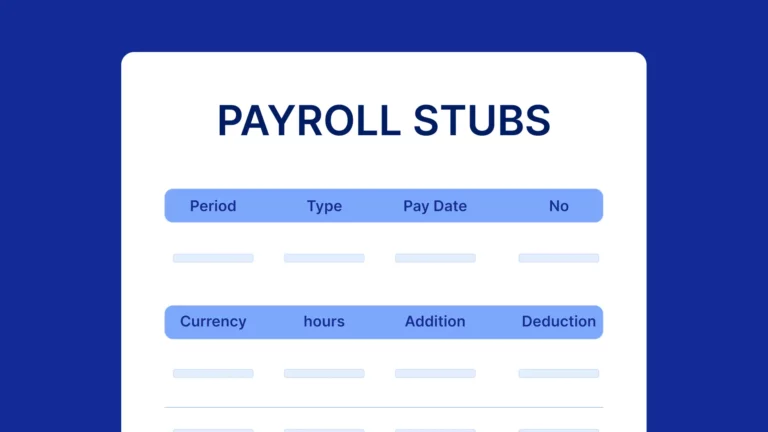As a sole trader, you are the only performer. That means you have to take up so much work and responsibilities. When you are not marketing, you track inventory or convert your lead into your customer.
These responsibilities leave you no time, look after critical aspects like taxes, accounting, and legal compliances.
There are several sole proprietorship tax forms that you need to fill out at some point in time when it comes to taxes. So, it is often confusing for seasoned sole proprietors and newbies to keep count of these forms.
To make things easier, here’s an article that will guide you through sole trader tax forms. So, read it and know what exactly you need to do for sole proprietorship taxation.
What is Sole Proprietorship Taxation?
Sole proprietorships are single-owned businesses where the entrepreneur is personally liable for the business. Such businesses are not incorporated as separate entities. Generally, start-ups and part-time businesses are sole proprietorships.
A sole proprietor need not file business tax returns as the owner, and the business is not separate in this structure. Instead, the owner must report business incomes and losses on the owner’s personal tax returns.
It is often recommended that after a business reaches a certain size, one must convert it to a C or S corporation. These entities allow you to sell the business shares to outside owners. Plus, it reduces taxes as the corporate tax rate is likely lesser than personal tax rates.
How are Sole Proprietorships Taxed?
As we have said, there are several sole trader forms for taxation. The business income is reported on Schedule C. It is a part of the individual tax return Form 1040. Here, you need to input the traditional income statement of your business.
As a sole proprietor, you are to report your estimated taxes to the IRS quarterly in a year. These taxes are due to any business income not subject to withholding. A sole proprietor must also pay self-employment taxes that include Social Security and Medicare.
What are the Tax Forms you can Use for your Sole Proprietorship Business?
Are you a budding sole proprietor? Or do you have a new venture in the making?
In both cases, understanding sole proprietorship tax return forms is important for you.
There are various sole proprietorship forms. Here’s a list of the tax forms for a sole proprietorship.
So, read through and get to know the tax forms for a sole proprietorship!
Form 1040 or 1040-SR
Among all the tax forms needed for a sole proprietorship, form 1040 or 1040-SR is required to file individual income tax returns with the IRS.
In sole proprietorships, the owner files business taxes through personal tax returns. Hence, use 1040 as the sole proprietorship income tax form.
The form also determines if the business owner or filer will receive a tax refund. To fill out Form 1040, you need to provide details like name, address, Social Security number, etc.
Schedule C (1040 or 1040-SR)
Along with Form 1040 or 1040-SR, you will need to use another sole trader tax return form – Schedule C. Using Schedule C, you must report the income or loss from a business you own as a sole proprietor. Also, you must use Schedule C to report wages and expenses related to being a statutory employee.
Schedule SE (1040 or 1040-SR)
As a part of sole proprietorship tax forms, use Schedule SE (Form 1040 or 1040-SR) for self-employment taxes. The self-employment taxes are your contributions towards Medicare and Social Security. Also, use Schedule SE to find out the taxes due on net earnings from self-employment.
Schedule A (1040 or 1040-SR)
Schedule A (Form 1040 or 1040-SR) relates to itemized deductions. Schedule A, along with sole proprietorship form 1040, is used to identify your itemized deductions. In most cases, if you consider the greater of your itemized deductions or your standard deductions, your federal income tax will be lower.
Schedule F (1040 or 1040-SR)
Considering the sole proprietor tax forms needed by most businesses, Schedule F (Form 1040 or 1040-SR) is different. That is because one must use Schedule F for reporting the profit or loss from farming. In other words, you must report farm income and expenses using Schedule F.
The use of Schedule F is the same as Schedule C. The only difference is that you must use Schedule F solely for farming businesses. You must file it with Forms 1040 or 1040-SR, 1041, 1065, or 1065-B.
Form 1040-ES
This sole proprietorship tax form relates to the estimated taxes for individuals. Using this form 1040-ES, you must pay taxes on income that is not subject to withholding like rents, earnings from self-employment, etc.
Further, the tax schedule that comes with the instructions for Form 1040-ES allows you to estimate the amount of income tax for the year. Based on your income estimations, the estimated taxes are calculated.
Make sure you pay your estimated taxes quarterly. Else you might have to pay fines and interest charges.
Form 940
Form 940 is for Employer’s Annual Federal Unemployment (FUTA) tax returns. Report and pay FUTA taxes if your business either;
- Paid wages of $1,500 or above in any quarter during the calendar year or the previous calendar year; or
- Employed one or more employees to work for the business for at least a part of the day in any different 20 weeks during the calendar year or the previous calendar year
Form 941 or 943
Form 941 relates to Employer’s Quarterly Federal Tax Returns. As an employer, you must file the quarterly Form 941 to report;
- The wages you have paid;
- The withheld federal income taxes;
- The tips received by your employees; and
- Both employer’s share and employee’s share of Social Security and Medicare taxes.
Keep in mind that after filing your first Form 941, you must file a return quarterly. You must file the return even if you do not have taxes to report unless you meet one of the exceptions or file a final return.
Use Form 943 to report and pay Employer’s Annual Federal Tax Return for agricultural employees only.
Form 944
This sole trader tax form is for Employer’s Annual Federal Tax Return.
This form was specially designed for the smallest entrepreneurs. By smallest, we mean the employers whose annual liability for Medicare, Social Security tax, and withheld federal income taxes is $1000 or below.
Using Form 944, the smallest employers must file and pay the above-mentioned taxes annually instead of every quarter.
In February every year, the IRS notifies as to which employers qualify to file Form 944.
Form W2 and W3
When businesses form as a sole proprietorship, one uses form W2 and W3 for reporting and transmittal of certain expenses.
Going into detail, form W2 reports wages, tips, and other compensation. Plus, the form is also used to report withheld social security taxes, income, and Medicare taxes for employees.
On the other hand, the SSA (Social Security Administration) and the IRS use Form W3 to summarize and transmit the W2 form of an employer. This form is used by the mentioned authorities to track the commission, salary, wages, tips, and other compensation that employers pay throughout the calendar year.
Form W-2G
Not all entrepreneurs must use Form W-2G. It is because this sole proprietorship form reports certain gambling winnings and any federal income tax withheld on these winnings.
The gambling winnings (if any) that you must report using Form W-2G are;
- Lotteries
- Horse racing
- Keno
- Bingo
- Dog Racing
- Slot Machine
- Jai Alai
- Sweepstakes
- Wagering pool, etc.
Form 1096
The sole trader tax form 1096 is formally titled the Annual Summary and Transmittal of U.S. Information Returns. This form transmits paper Forms 1099, 5498, 1098, and W-2G to the IRS.
Using form 1096, the employer must submit information returns reporting all the non-employee compensation to the IRS.
Note that, non-employee compensation is any compensation paid to business entities or individuals that do not fall under the classification of employees. For instance, independent contractors.
Form 1099-MISC
As an entrepreneur, you must file Form 1099-MISC for each person whom you have made the following payments during a year;
- Minimum $10 in royalties or broker payments instead of tax-exempt interest or dividends
- Minimum $600 in rents, medical or healthcare bills, prizes and awards, crop insurance proceeds, fishing boat proceeds, cash payment for fish, payments to an attorney, cash paid to a partnership, estate, or an individual from the notional principal contract.
Additionally, you must use Form 1099-MISC to report any direct sales of a minimum of $5000 of consumer products to a buyer for reselling purposes anywhere except a permanent retail establishment.
Besides, Form 1099-MISC, there are certain other 1099 forms that you might use to report the following;
- 1099-A – Abandonment of secured property or acquisitions
- 1099-B – Proceeds from barter transactions and broker
- 1099-C – Cancellation of debts
- 1099-CAP – Modifications in capital structure and corporate control
- 1099-DIV – Dividends, distributions
- 1099-INT – Interest income
- 1099-OID – Original Issue Discount
- 1099-PATR – Taxable distributions received from cooperatives;
- 1099-R – Distributions from retirements, insurance contracts, pensions, annuities, profit-sharing plans, IRAs, etc.
- 1099-S – Real estate transaction proceeds
- 1099-SA – Distributions from Medicare Advantage MSA, Archer MSA, or HSA.
Note: All corporations must file 1099-MISC if it makes payments of commissions, rents, or other fixed incomes that totals $600 or above to any one individual during a calendar year.
Things to Know about Tax form for sole proprietorship LLCs
An LLC or Limited Liability Company is a business structure that limits the liability of the business owner, unlike in sole proprietorship.
In LLCs, an owner (generally, referred to as a member on legal records) is not personally liable for the business. In this structure, the business and the owner are separate entities.
When you register an LLC, it will be a sole proprietorship when you register an LLC if you are the only owner. If there are multiple owners, it will automatically be a general partnership.
In general partnerships, you are to file a business tax return. The business income passes through the tax returns of the owner.
If the LLC has a single owner, consider it as a form of sole proprietorship. Here, the business taxes pass through the owner’s personal tax returns. The single-owner LLCs do not file their own tax returns and hence, are treated as disregarded entities.
Coming to the tax forms for sole proprietorship LLC, here are three forms that reflect the activities of an LLC
- Form 1040 or 1040-SR Schedule C – Includes the profit or loss from sole proprietorship business
- Form 1040 or 1040-SR Schedule E – Reports the supplemental income or loss of the business
Besides these, single-member LLCs are subject to tax on net earnings from self-employment like in sole proprietorships. In case, a partnership or corporation owns a single-member LLC, the owner’s federal tax return should include the LLC as a division or part of the corporation.
Find out More about Sole Proprietorship with Multiplier
Are you planning to start your sole proprietorship business? Is it a challenge to onboard employees with appropriate skills and expertise? Well, you are at the right place!
Start working with a B2B SaaS onboarding tool that can help you with:
- Super-fast employee onboarding
- Prompt multi-currency payroll management
- Generating compliant contracts for employee onboarding
To know further Start your free demo now!







